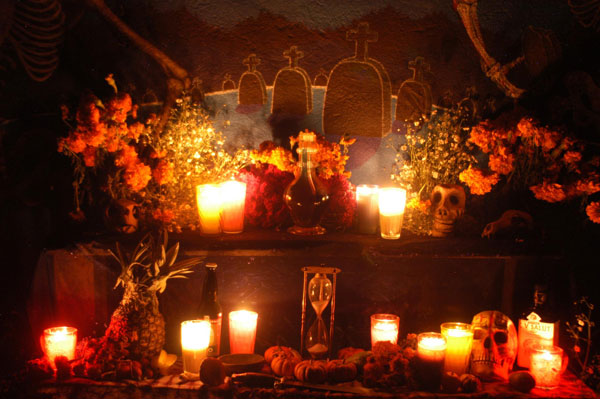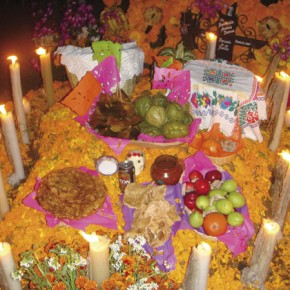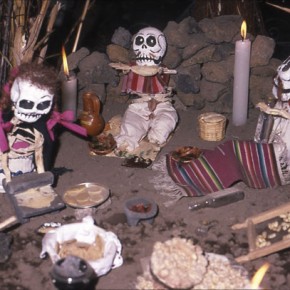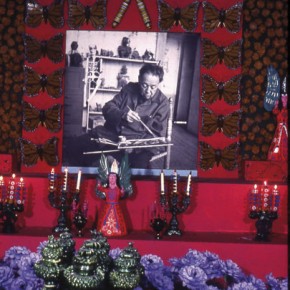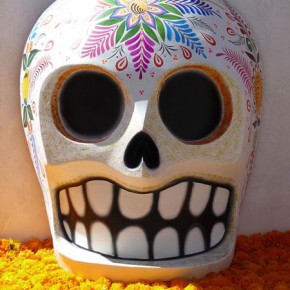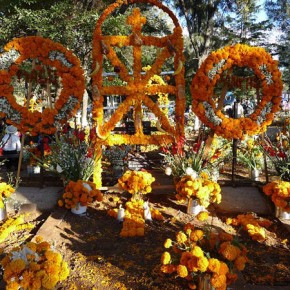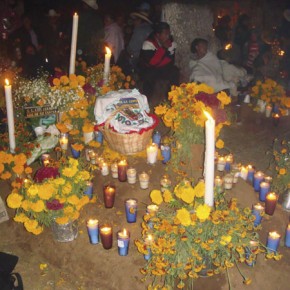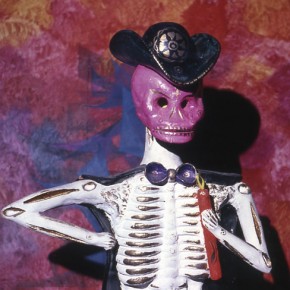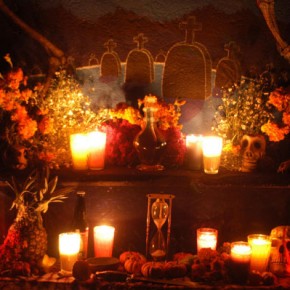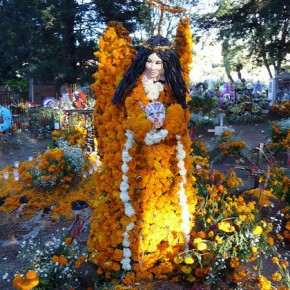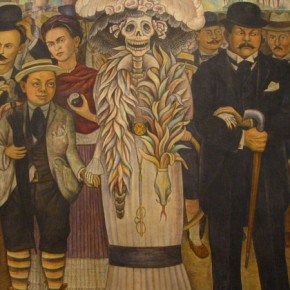The ritual known today as Diá de los Muertos, or Day of the Dead, has been celebrated by the indigenous populations of Mexico for at least 3,000 years. Ancient civilizations believed that death was the continuation of life not the end. That living was just a dream and only in death did they become truly awake.
Originally, celebration began on the ninth month of the Aztec Solar Calendar, approximately the beginning of August, and lasted for the entire month. With the arrival of the Spanish Conquistadors and their attempts to convert the natives to Catholicism, they tried to kill the rituals. Spaniards viewed death as the end of life and considered the rituals to be sacrilegious and the indigenous people to be barbaric and pagan. To make the ritual more Christian, the Spaniards moved it so it coincided with All Saints’ Day and All Souls’ Day (November 1 and 2), which is when it is celebrated today.
Although the dates have changed, Día de los Muertos, still maintains the basic principles of the Aztec ritual, such as the use of skulls. The Aztecs and other Meso-American civilizations used skulls to symbolize death and rebirth, also to honor the dead, whom they believed came back to visit during the month long ritual. Today, people wear wooden skull masks called calacas and dance in honor of their deceased relatives. The wooden skulls are also placed on altars in the home, that are dedicated to the dead. In some homes you will find meals prepared and music played that were once the favorites of the deceased. It is tradition in some families to visit the cemeteries where their loved ones are buried, where they decorate gravesites with cempasúchil (marigold) flowers and candles; some even bring toys for dead children and bottles of tequila for adults.
For weeks before the Day of the Dead, artisans begin to create alters and a great variety of symbolic representations of death, motive for inspiration, anguish, satire and ritual for the Mexican people: La Calaca (the Skull), La Huesuda (the Bony One), La Catrina (She in the fancy dress), La Pelona (The Bald One), La Parca (the Gray One)—innumerable nicknames for just one personage—La Muerte (Death). Alters are covered with fancy Catrinas or skeleton musicians that play the marimba or the guitar, or dressed in Charro outfits and sombreros, they dance the Jarabe Tapatio (the Mexican Hat Dance). Ghosts and coffins are also popular themes, as are alters in homage of famous or beloved celebrities.
The theme of death has been a fascination for Mexican painters, artisans and muralists. This theme has been beautifully expressed in paintings and murals by the greatest of the Mexican painters, such as Diego Rivera, Juan O’Gorman, Jorge Gonzalez Camarena, Jose Clemente Orozco, Raul Angiano, Chavez Morado and many more.
Day of the Dead celebrations are held throughout Mexico, but some of the most impressive are in certain towns, such as: Janitzio, one of the islands on Lake Patzcuaro, and San Andreas Mixquic, a small community southwest of Mexico City. But you will find that in any town or city in Mexico they celebrate the dead with ceremony and festivities, ranging from solemn remembrance to costume parties.
- Favorite foods left for the dead in Uruapan, Michoacan. Photo courtesy of Enfield Richmond de Mejia.
- The ubiquitous decorated skeletons of Day of the Dead. Photos courtesy of Enfield Richmond de Mejia.
- Ofrenda for Diego Rivera. Photos courtesy of Enfield Richmond de Mejia.
- Ceramic skull atop marigolds in Bosque Village in Michoacan. Photo by Marie Oaks.
- Decorated graves and famalies gathering in Patzcuaro, Michoacan. Photo by Marie Oaks.
- Famalies gather at the cemetery with food and offerings for the dead in Uruapan, Michoacan. Photo courtesy of Enfield Richmond de Mejia.
- The ubiquitous decorated skeletons of Day of the Dead. Photos courtesy of Enfield Richmond de Mejia.
- Day of the Dead alter, ofrenda, with candles and flowers, in Bosque Village in Michocan. Photo by Marie Oaks.
- Angel made of marigolds amogst the ofrendas. Patzcuaro, Michoacan. Photo by Marie Oaks.
- Detail of Diego Rivera’s mural, Sueño de una Tarde Dominical en la Alameda Central.
- Famous Calavera illustration by Jose Guadalupe Posada.

